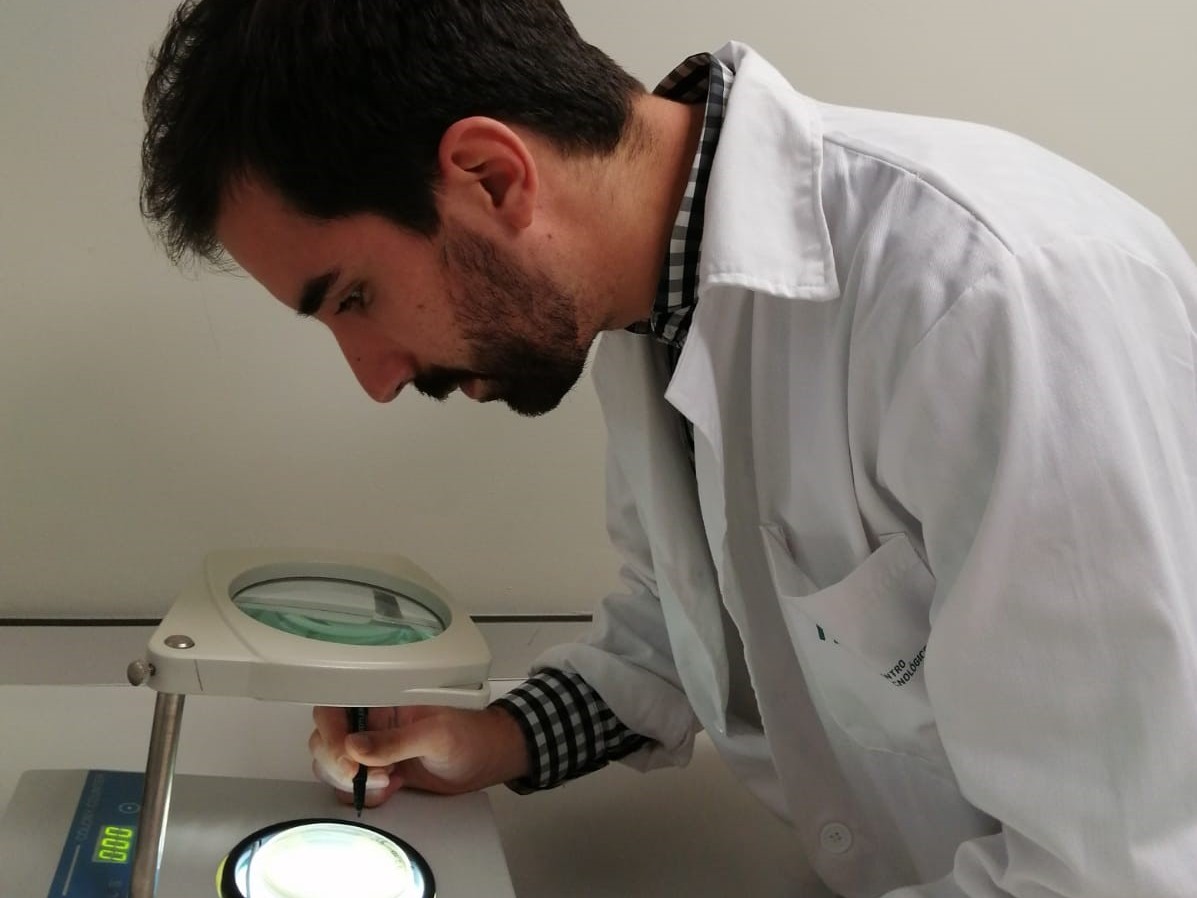Novel packaging tackles food waste with... food waste
The most recent estimates of European food waste levels reveal that 70% of EU food waste arises in the household, food service and retail sectors. Imagine a world where the expired or leftover food in your household, is transformed to extend the shelf life of those very same products… Thanks to an innovative industrial process to reinforce food packaging materials this could soon become reality. The process uses nanochitin, a polymer derived from a food waste valorisation process, to alter the properties of bioplastic which results in a better, more versatile material. The innovation, developed within the SCALIBUR project, has many potential industrial applications, but within the project is specifically being tested as a food packaging solution. “We are developing new biopolymers, that are extracted from biowaste, in order to create a better functioning bioplastic packaging solution” explains Alejandro Aragón, Project Specialist at ITENE, the coordinators and technical partners of the SCALIBUR project. “The addition of nanochitin to biopolymers such as polylactic acid (PLA) can improve the material in many ways, but particularly with regards to its barrier properties, which slows the natural degradation process and improves the shelf life of future food products.” Significant improvement of bioplastics Alejandro considers the performance of this new bioplastic material so high that it now poses a serious challenge to classic petroleum-based plastics: “The main drawbacks of most biopolymers are related to their poor mechanical performance, low thermal stability or their insufficient barrier properties. These novel bioplastics, reinforced with nanochitin, are more durable and can better withstand changes in temperature than the packaging you find at your local supermarket.” Alejandro believes “…this breakthrough could give rise to a new generation of improved bio-based materials which will impact the packaging industry, providing sustainable alternatives to conventional materials.” Laboratory scale The source of the chitin material is the University of Modena and Reggio Emilia (UNIMORE), another partner in the SCALIBUR project, that rears black soldier flies (BSFs) on food waste from canteens, before extracting chitin from the flies and sending it to Alejandro and his colleagues for further testing. While Alejandro is excited about the material’s potential, the tests conducted so far have been at a small scale: “At the moment we’re still working at a laboratory level, with about 100 g of chitin per month that we receive from UNIMORE.” Although the work is still at a laboratory scale, initial tests have revealed that an addition of low amounts of chitin nanofibers has a significant effect on the oxygen barrier and mechanical properties of the polymeric material. Untapped resource Typically, the discarded shells of crustaceans provide a large proportion of the industrial chitin resources in Europe. Alejandro believes that this new process now offers the chance to instead extract it from an abundant organic resource, present in every territory. “Food waste can ultimately become the solution to the problem it poses, as this process could ensure that food products enjoy a longer shelf life and therefore avoid being wasted.” For now, Alejandro and his team are still conducting tests to determine the optimum ratio between the polymer and the chitin nanofibers but by the end of SCALIBUR project in 2022 they hope to obtain a packaging prototype consisted of a biopolymer reinforced with nanochitin extracted from black soldier fly, with properties that can compete with the current fossil-based plastics. This article is part of a series on ‘Urban circular bioeconomy innovators’, find out more at www.scalibur.eu. Text: Daniel Lissoni, Greenovate! Europe
Keywords
bioplastics, chitin, packaging, food, food waste, ofmsw, black soldier fly, insects



